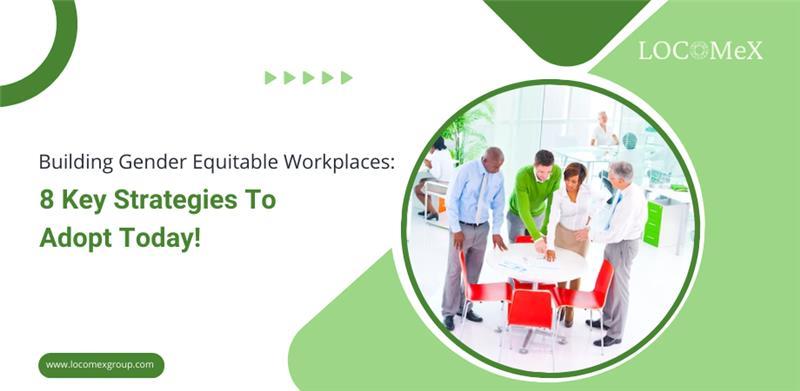142
Is your organization doing everything possible to achieve gender equality in the workplace?
Several types of research have confirmed that having more women leaders in the workforce increases the well-being of all employees. Studies have repeatedly shown that promoting diversity and gender equality in the workplace benefits broader positive societal impact.
However, getting there isn’t simple. Everyone has a part to play, from senior organizational leaders and HR teams to male coworkers at all levels to specific women.
To create an organizational culture that can effectively helps in addressing systemic barriers, organizations and individuals working toward gender equality must reevaluate existing practices and confront preconceived notions.
Our ESG and Sustainability Management Software stands as a testament to this, empowering organizations to embrace the ideologies of all team members navigating with gender neutral lens.
Defining Gender Equality In Work Place
Gender equality in the workplace refers to ensuring fair treatment, equal opportunities, and outcomes for individuals of all genders. It involves creating an inclusive work environment where gender-based biases, discrimination, and barriers to advancement are addressed and eliminated.
Several tech giants have tried to achieve gender equality to achieve a work-life balance. Here are a few examples:
- Adobe: Adobe has made strides in promoting gender equity through various initiatives. The company conducts regular pay equity assessments and adjusts compensation where necessary. Adobe also supports women in technology through programs like the Adobe Digital Academy, which provides training and career opportunities to underrepresented groups.
- Intel: Intel has focused on increasing gender diversity and inclusion in its workforce. The company has set targets for hiring and retaining women returnees, especially in technical and leadership roles. Intel also offers training programs and helps sponsor women for their career development programs.
With our Best Project-Based ESG risk Scoring Tool, we empower businesses to make better decisions and confidently navigate ESG challenges.
Types Of Gender Inequality Faced By Women
- Gender Pay Gap: Women often face lower wages compared to their male counterparts, even when they possess similar qualifications and experience.
- Occupational Segregation: Certain industries and job sectors tend to be dominated by one gender, resulting in limited access and opportunities for individuals of the underrepresented gender.
- Limited Career Advancement: Due to biases and stereotypes, women frequently encounter barriers when seeking promotions or leadership roles.
- Hostile Work Environment: Women may face discrimination, sexual harassment, or a hostile work environment, creating barriers to success and well-being.
Some of the cultural expectations expected by men are having more work commitments rather than caregiving responsibilities. Men may encounter barriers in accessing parental leave and receiving childcare support.
It is important to remember that while men may face specific gender inequalities, addressing the larger systemic gender disparities affecting female returnees remains a critical priority.
Eight Key Strategies To Achieve Gender Equity Goals
The eight essential strategies to achieve gender equity goals and foster inclusive workplaces:
- Equal Pay and Compensation:Achieving equal pay and compensation involves ensuring that individuals receive fair remuneration based on their skills, qualifications, and performance, regardless of gender. Organizations should promote gender equality and conduct regular pay equity audits to identify and address any existing gender pay gaps.
Transparent salary structures and policies can promote pay equity. Furthermore, implementing salary negotiation training programs and eliminating pay secrecy can empower women leaders to address systemic barriers. - Gender-Inclusive Recruitment and Hiring Process: To eliminate gender bias, executive and functional leaders must adopt gender-inclusive recruitment and hiring practices. It involves addressing biases that may unconsciously influence the selection process.
Implementing blind resume screenings, diverse interview panels, and establishing structured interview processes can help mitigate gender bias. Additionally, organizations can actively seek out diverse candidate pools by partnering with diverse professional networks and organizations. - Exclusive Leadership Development Program Initiative: Establishing leadership development programs to support women professionals is crucial for fostering gender equity. These gender-equitable workplace programs can provide women guidance, support, and opportunities to enhance their skills, expand their networks, and access career advancement opportunities.
Pairing experienced women employees with mentors and sponsors who can advocate for their professional growth and provide valuable insights can be instrumental in overcoming barriers to advancement. - Flexible Work Policies: Offering flexible work policies is essential for addressing women’s and men’s work-life balance challenges. Men in power can take leadership accountability, being visible and active advocates can implement policies such as remote work options, flexible working hours, and parental leave programs.
These initiatives support employees in managing their personal and professional responsibilities more effectively, reducing gender disparities related to caregiving responsibilities, and promoting equal opportunities for career progression.

- Addressing Unconscious Bias: Unconscious biases can significantly impact decision-making processes within organizations, perpetuating gender inequalities. Organizations can help employees and leaders demonstrate these biases by providing awareness training and education on unconscious biases. These can be achieved through workshops, interactive training sessions, and intentional and holistic strategies.
- Creating Safe and Inclusive Work Environments: To achieve gender equity, organizations must prioritize creating a safe and inclusive work environment. Implementing and enforcing robust policies and procedures to prevent and address workplace harassment and discrimination.
Organizations should establish channels for reporting incidents, provide training on respectful workplace behaviors, and ensure that allegations are promptly and thoroughly investigated. Awareness campaigns and ongoing communication should foster a culture of respect and inclusivity. - Promoting Work-Life Integration: Supporting work-life integration is crucial irrespective of sexual orientation, to balance personal and professional responsibilities effectively. Organizations can promote employee well-being by offering resources and support for childcare, eldercare, and other caregiving needs as part of the gender inclusion journey.
Encouraging open discussions like leader’s performance reviews, providing flexible scheduling options, and sponsoring women where employees feel comfortable discussing their needs can help women build confidence. - Diversity and Driving A Culture Shift: Developing and implementing comprehensive diversity and inclusion initiatives is key to achieving gender equality. These initiatives should aim to increase gender diversity across all levels of the organization, including representation on corporate boards and in leadership positions. Organizations should foster an inclusive culture that values diversity and actively promotes opportunities for all mid and senior levels to thrive, even to retain women employees.
Build Empowered Community With LOCOMeX
As champions of diversity, equity, and inclusion (DEI), we understand the significance of embracing all perspectives. Our As champions of diversity, equity, and inclusion (DEI), we understand the significance of embracing all perspectives. Our AI-powered Supply Chain Optimization Software ensures that every individual’s unique experiences and identities are valued and incorporated. Paired with our ESG Benchmarking Tool, we help organizations build a more sustainable future by prioritizing social, environmental, and economic well-being.




